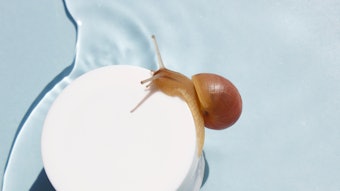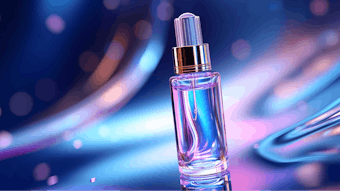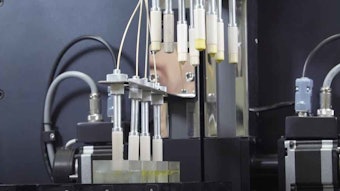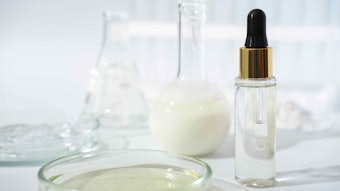Most consumer attention to oysters and mussels has centered on their taste, beautiful by-products or aphrodisiac effects; however, their adhesive properties are what caught the attention of Jonathan Wilker, PhD, associate professor of chemistry, and his research team at Purdue University. Wilker’s team has been studying marine biological adhesives for years and has found that the two mollusks produce adhesives that form a non-toxic, strong bond in wet environments. Although Wilker mainly has worked to develop synthetic versions of the adhesives for medical use, he is investigating other applications, which may include personal care.
Mollusk Glue Composition
Wilker has studied the adhesives produced by various marine entities, including Mytilus edulis (the blue mussel) and Crassostea virginica (Eastern oyster)—an oyster popular in the human diet. He notes one similarity. “Mussels, oysters and barnacles all use cross-linked proteins, (long biological polymers), to make their adhesive,” said Wilker. The difference, however, is in the composition of the adhesive.
To study the adhesive, Wilker and his team cut open the shells of oysters and observed the interface where they were attached; he compared this with separate, unattached portions of shell as a control. “[Since] the oyster’s adhesive is comprised of materials similar to the shell, we speculate the cement comes from the same place, system or organ as the shell,” he furthered.
Both the oyster shell and adhesive consist of calcium carbonate and protein as starting materials but the shell is mostly calcium carbonate with a small amount of protein, whereas there is more protein and less calcium carbonate in the adhesive. “In the cement, the extra reactivity is added to the proteins so they crosslink together,” Wilker explained. The adhesive produced by oysters is 10-15% protein and 85-90% calcium carbonate (chalk), which according to Wilker results in a hard inorganic, cement-like material.
Unlike oysters, Wilker notes that mussels separately produce their adhesive and shell. “If you crack open a mussel, a separate organ [is present that] produces the adhesive,” said Wilker. He added that the adhesive produced by mussels is about 99% proteins and more like soft organic glue.
Wilker and his team hypothesize that the consistencies of the mollusks’ adhesives differ based on the materials that they must hold together. “Oysters are externally sticking a hard shell to another hard shell, or hard shell to a hard rock—so maybe it is best to have a hard material. Whereas mussels are sticking a hard rock to the soft insides of the rest of the mussel,” said Wilker.
Synthetic Manufacture
Since only a small amount of adhesive can be extracted from oysters and mussels, the team is producing the materials on a larger scale synthetically. “We are making synthetic versions of the adhesives to gain access to larger quantities . . . to be able to tailor the adhesive to its specific application,” said Wilker.
He explained that proteins cannot easily be made on a large scale, so rather than using the proteins in the synthetic adhesive, the team has inserted the cross-linking chemistry from the animals into bulk polymers. “If we extract the proteins from the animals, we can make 25 mg of the adhesive on a good day; if we put the mussel chemistry into a polymer backbone, we can synthesize 25 g on a good day,” explained Wilker, noting that the scale-up is 1,000 times more. The synthetic adhesive currently is only produced to mimic the mussel adhesive but the team plans to synthesize the oyster adhesive as well in the future.
Adhesive Applications
There are two places where new adhesive materials are in demand, according to Wilker: for bonding wet tissue, i.e. surgical adhesives that seal wounds and incisions by bonding skin together; and in orthopedics, to act as bone cement or bone fill. Wilker notes that while there currently are some adhesives available that close wounds, they are often toxic.
According to Wilker, the three things one must look for in a medical adhesive are: “it must set in a wet environment, it must make strong bonds and it must be non-toxic.” He added that some materials will provide one or two of these benefits but not all three. “We hope our synthetic adhesive will do all three,” emphasized Wilker.
In personal care, such adhesives could be adapted in topical patches, eyelash adhesives and nail glues to provide non-toxic bonding, although Wilker notes this bond would be weaker than in medical applications. He adds that adapting the adhesive for personal care would not be difficult now that the hardest part of his research is complete. “We have been concentrating efforts on making the adhesive as strong as possible, so it would be easier to make it less strong.”










